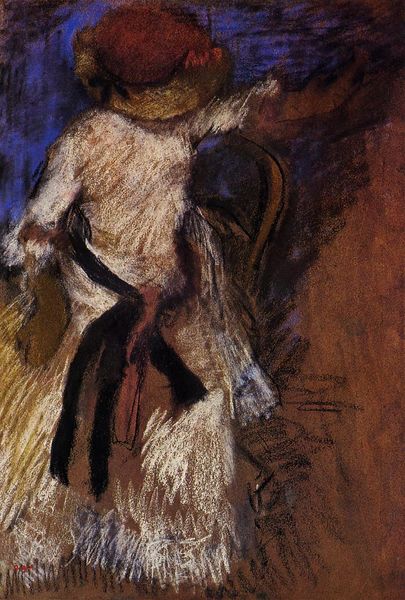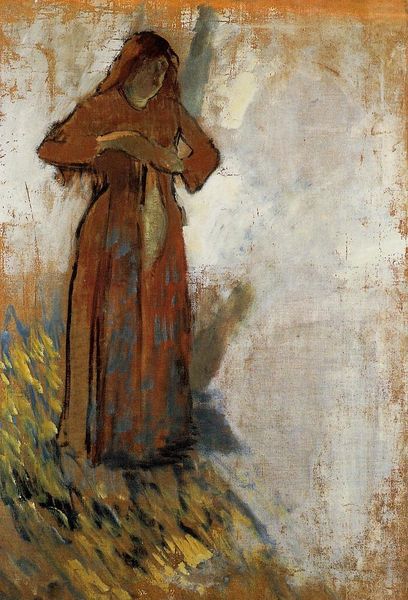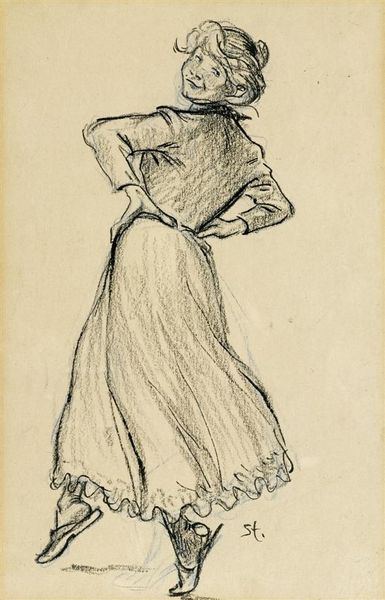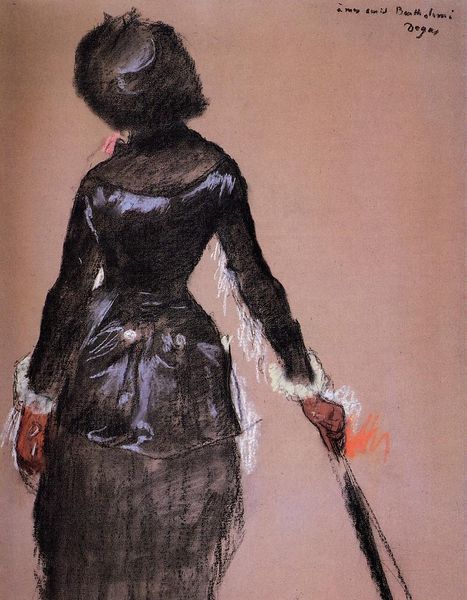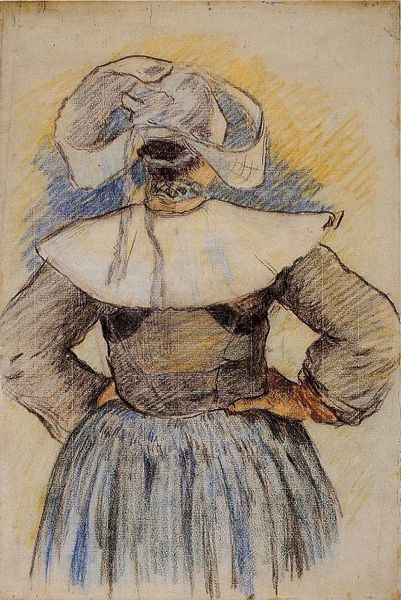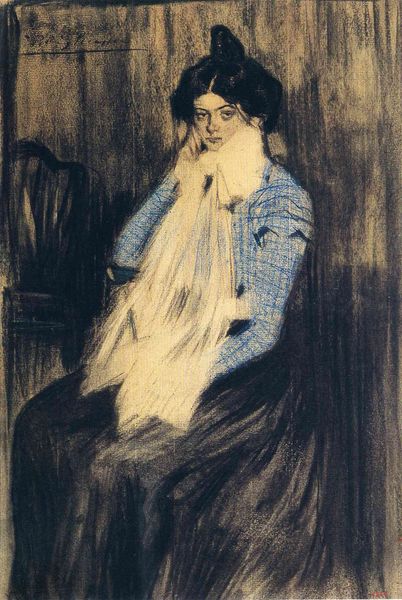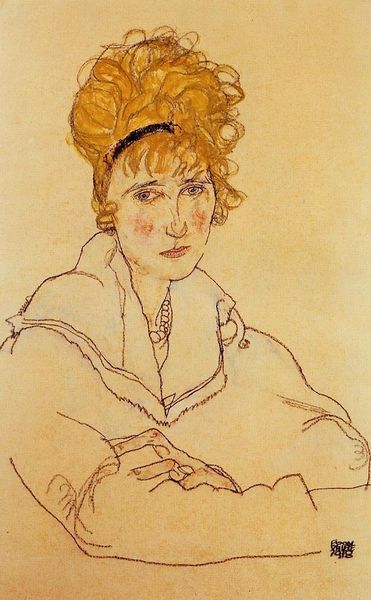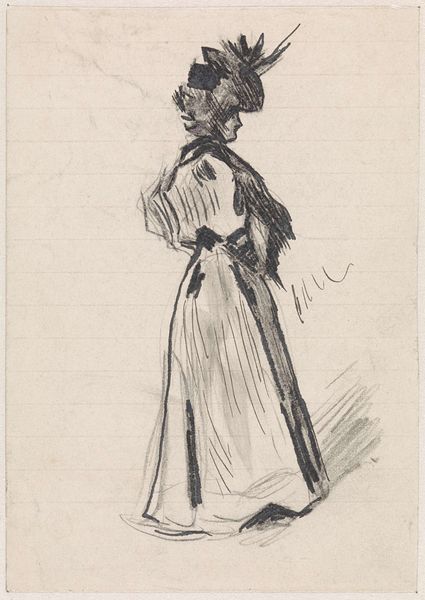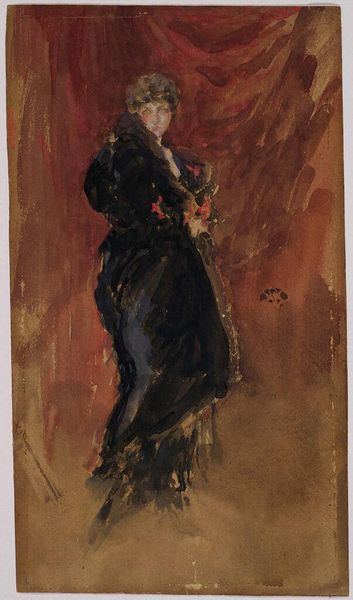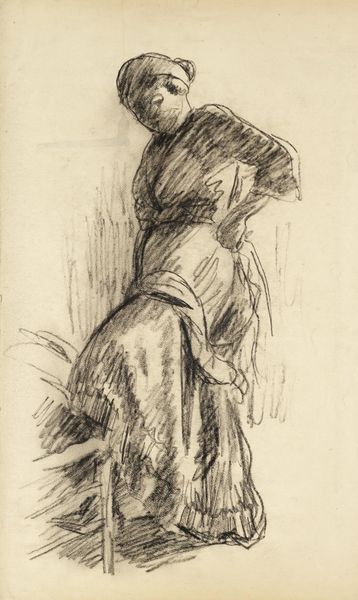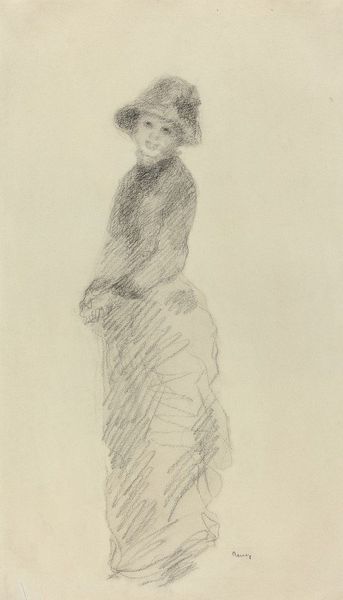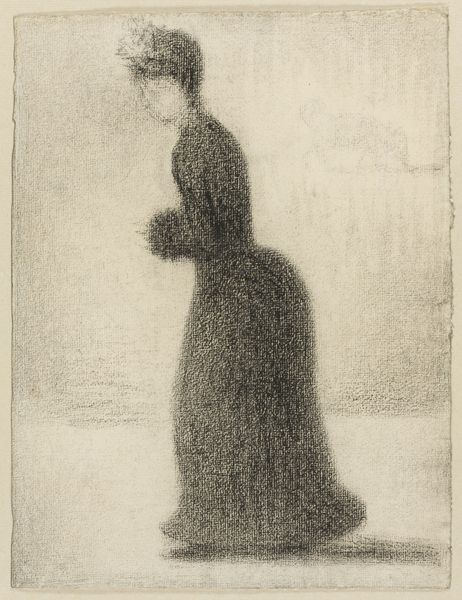
drawing, pastel
#
portrait
#
drawing
#
impressionism
#
charcoal drawing
#
figuration
#
pastel chalk drawing
#
costume
#
line
#
pastel
Copyright: Public domain
Curator: This is Edgar Degas' pastel drawing "Ellen Andree," created in 1879. What’s your first reaction to this portrait? Editor: Melancholy. The muted palette and the subject's averted gaze… she seems a bit world-weary. I notice the stark simplicity of the medium; the pastel almost feels like chalk. Curator: Yes, Degas masterfully uses pastel and charcoal here to capture a fleeting moment, a specific mood. Portraits of women were central to Degas’ broader exploration of modern life and leisure. Can you speculate on her expression? Editor: Her clothing situates her within a specific social class. That brown overcoat and fashionable hat suggest an urban, bourgeois woman. Considering Degas' interest in the social life of Paris, it is interesting she turns away, maybe showing her unwillingness to participate? Or perhaps a statement about the alienation within modern society? Curator: Perhaps. The figure in the costume can symbolize identity and performance. Consider how the layers of clothing conceal as much as they reveal, both sheltering her but also dictating certain societal norms she seems subtly to be rejecting. How does it communicate dignity or maybe something else? Editor: I see that – the costume acting as armor, reflecting the pressures of propriety on women in that era. While the style evokes freedom, it is constrained within boundaries, making her stand as a poignant reflection on that historical moment. It makes me question what Degas intended to represent by averting her eyes, avoiding that connection with the viewer. Curator: What interests me the most, beyond the social history aspects you touch upon, is what that gaze symbolizes over time. That averted glance becomes a timeless gesture. And you start seeing in her a symbol for resilience in an overwhelming time and cultural setting. Editor: It's compelling how such subtle artistry manages to evoke those universal responses and cultural layers through one single portrait from the late 19th century, making one feel this woman could live anytime. Curator: Indeed, it's in these subtle evocations that the work remains resonant, connecting the specific to something larger than the timeframe, leaving so much space for viewers to make their own connections.
Comments
No comments
Be the first to comment and join the conversation on the ultimate creative platform.
